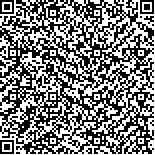| 摘要: |
| 针对目前湿地信息提取中存在的“同物异谱”、“同谱异物”问题,以黄河三角洲自然保护区为实验区,采用在信息提取方面具有优势的典型相关森林算法,将Sentinel-1A雷达影像和Sentinel-2A多光谱影像作为基础数据,考察分别应用多光谱影像、合成孔径雷达(Synthetic Aperture Radar,SAR)和多光谱二者综合、SAR纹理特征以及植被指数对湿地信息提取的效果和适用性。研究结果表明:(1)基于Sentinel-2A多光谱影像,在分类方法上,典型相关森林(canonical correlation forest,CCF)的总体精度最高,达到94.32%,与支持向量机和随机森林分类算法相比分别提高了6.55%和5.47%;(2)基于Sentinel-2A多光谱影像和Sentinel-1A后向散射系数的CCF总体精度达到了94.89%,与只利用多光谱影像相比,3种算法的总体精度和Kappa系数均得到了提升;(3)在SAR和光学联合的基础上加入SAR纹理特征后总体精度和Kappa系数均略有下降,分别为94.72%和0.935 3;(4)在SAR和光学联合的基础上加入归一化差分植被指数(NDVI)、比值植被指数(RVI)、差值植被指数(DVI)、归一化差分红外指数(NDII)和差分红外指数(DII)5种植被指数后,总体精度达到了最高为95.35%,7种地物的生产者精度有所提高,有效提高了对黄河三角洲湿地信息的提取能力。实验结果可为黄河三角洲湿地的合理开发和有效保护提供科学支持。 |
| 关键词: 信息提取 SAR Sentinel-2 典型相关森林 黄河三角洲 |
| DOI:10.11759/hykx20220429010 |
| 分类号:TP79 |
| 基金项目:中央高校基本科研业务费专项项目(22CX01004A-8);国家自然科学基金面上项目(62071492) |
|
| Extraction of wetland information from Sentinel-1 and Sentinel-2 images in the Yellow River Delta |
|
LIU Chang1, WANG Yan2, WANG Zhao2, SHENG Hui1, XU Ming-ming1, LIU Shan-wei1
|
|
1.College of Oceanography and Space Information, China University of Petroleum(East China), Qingdao 266580, China;2.Qingdao Geotechnical Investigation and Surveying Research Institute, Qingdao 266000, China
|
| Abstract: |
| In order to solve the problems of “same object with different spectrum” and “foreign object with same spectrum” in wetland information extraction, the Yellow River Delta Nature Reserve was taken as the experimental area, and canonical correlation forest algorithm, which has advantages in information extraction, was adopted. Sentinel-1A radar image and Sentinel-2A multi-spectral image were taken as the basic data. The effects and applicability of multi-spectral image, Synthetic Aperture Radar (SAR) and multispectral synthesis, SAR texture feature and vegetation index for wetland information extraction were investigated. The results show that: (1) Based on Sentinel-2A multispectral images, the overall accuracy of Canonical Correlation Forest (CCF) is the highest, reaching 94.32%, which is 6.55% and 5.47% higher than that of support vector machine and random Forest classification algorithm, respectively; (2) The overall accuracy of CCF based on Sentinel-2A multispectral image and Sentinel-1A backscattering coefficient is 94.89%. Compared with the sentinel-2A multispectral image, the overall accuracy and Kappa coefficient of CCF based on sentinel-1A backscattering coefficient are improved; (3) The overall accuracy and Kappa coefficient decreased slightly after adding SAR texture feature, which were 94.72% and 0.935 3, respectively; (4) After adding Normalized Difference Vegetation Index (NDVI), Ratio Vegetation Index (RVI), Difference Vegetation Index (DVI), Normalized Difference Infrared Index (NDII) and Differential Infrared Index (DII) on the basis of SAR and optical combination, the overall accuracy is up to 95.35%.The producer accuracy of seven kinds of land features was improved, which effectively improved the extraction ability of wetland information in the Yellow River Delta. The experimental results can provide scientific support for the rational development and effective protection of the Yellow River Delta wetland. |
| Key words: information extraction SAR Sentinel-2 Canonical Correlation Forest Yellow River Delta |
